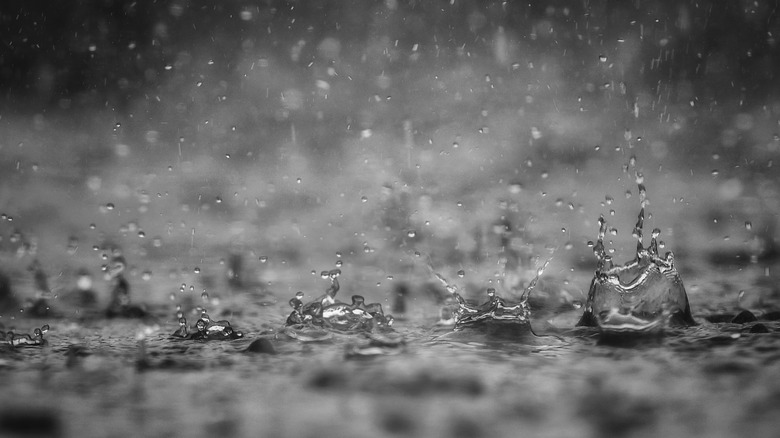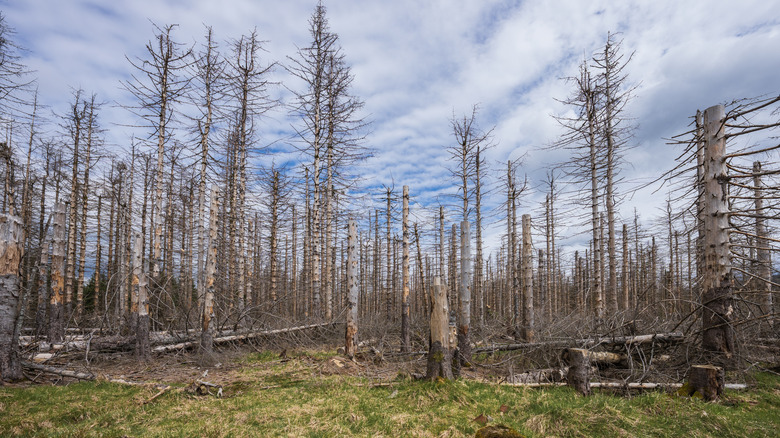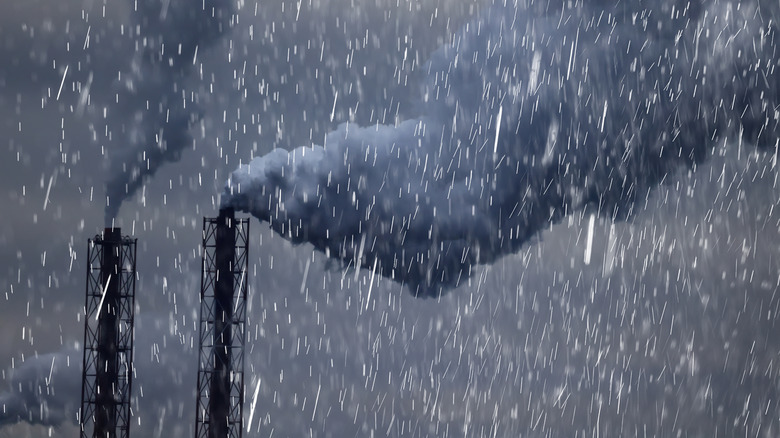What Is Acid Rain And What Impact Does It Have On Human Health?
Acid rain is a very broad term. It encompasses not only rain but also other forms of precipitation including fog, hail, sleet, snow, dust, and gas. It can even cause haze or smog, contributing to the pollution levels in cities that could be just as bad as smoking.
The pH scale goes from 0 to 14, where 0 is extremely acidic and 14 is alkaline. Normal rain falls at 5.6 on the pH scale. Acid rain, however, usually falls between 4.2 and 4.4. Any type of precipitation that has more acid in than usual is typically classified as acid rain.
Acid rain used to be a horrifying concern as society watched it destroy forests and wipe out colonies of fish. However, it also has a detrimental effect on human health, specifically causing problems with the lungs such as pulmonary edema. The 1990 Clean Air Act Amendments were effective in reducing pollutants that contribute to acid rain — pollutants caused by power plants, manufacturing centers, and vehicles. The problem isn't entirely solved, though, and your health is still at risk.
Acid rain's impact on people and the planet
The main danger to humans from acid rain is not getting it on your body, but breathing in the particles. These cause skin and eye irritation, damage the enamel on your teeth, and can even cause fluid in your lungs. It is especially bad for young children or people with pre-existing respiratory or cardiovascular conditions.
Acid rain is also devastating to the planet. It harms animals in the water that can't handle higher acidity, reducing birth rates and the survival of the young. This disrupts the natural food chain and can have far-reaching consequences. It makes it more difficult for trees to get nutrients, potentially killing off entire forests. Acid rain harms the soil, turns water bodies toxic, and erodes both stone and metal.
Acid rain is most prevalent in places with heavy industrial centers. But if you don't live near one, you are not automatically safe. Winds blow the pollutants across countries, and soils that don't have enough limestone are more vulnerable to acid rain. As acid rain is directly caused by human pollution and amplified by global warming, it is another significant concern for what could potentially happen to Earth if we are not able to get control over climate change.
How to prevent acid rain
Acid rain can be stopped by reducing the burning of fossil fuels and focusing on green energy. The Acid Rain Program from the Environmental Protection Agency works toward reducing emissions, but while industrial plants have a huge environmental influence, there are still things individuals can do to protect the planet and their own health.
Large-scale lifestyle choices have the biggest impact on the world. Being childfree or having fewer children significantly fights climate change, as does eating vegetarian or vegan. A study published in PLOS Climate in 2022 analyzed the outcome of vegan eating on the planet. Study co-author and professor of Stanford University, Patrick Brown, released the statement: "If animal agriculture were phased out over 15 years and all other greenhouse-gas emissions were to continue unabated, the phase-out would create a 30-year pause in net greenhouse gas emissions and offset almost 70 percent of the heating effect of those emissions through the end of the century."
Other actions that make a difference include using solar panels for your home, driving electric vehicles, or simply driving less in general. While acid rain is not as big of a problem as it was a couple of decades ago, it is still an issue. There are also other problems caused by human pollution that are worse than acid rain, such as microplastics. By being aware of the consequences humans have on the climate, we can protect our health now and in the future.


